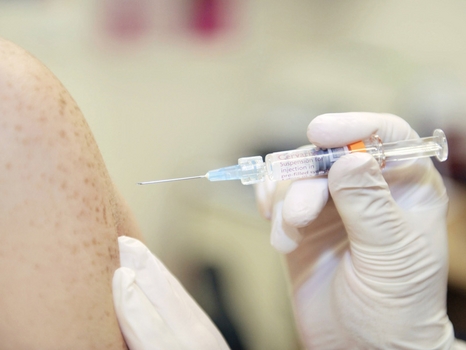‘Profound reduction’ in cervical disease in HPV-vaccinated women, study finds

The HPV vaccine has led to a ‘profound reduction’ in the rate of precancerous cervical changes in Scotland.
Rates of high grade CIN have fallen by almost 90% in Scottish women who received the HPV vaccine, according to the study, with the study authors suggesting that the findings may warrant a ‘redesign’ of the Scottish cervical screening programme.
The study was carried out by researchers in Scotland and looked at records for just under 140,000 women who had a smear test result recorded at the age of 20. They compared rates of CIN in women born in 1995-96, who were routinely vaccinated against HPV at the age of 12 or 13, and women born in 1988-90, who were not vaccinated.
The researchers found that the rate of grade 3 CIN fell by 89%, from 0.59% in unvaccinated women born in 1988-90 to 0.06% in women born in 1995-96.
There was am 88% reduction in the rate of grade 2 CIN and a 79% reduction in grade 1.
They also found that unvaccinated women born in 1995-96 had a 63% reduction in grade 1 CIN, a 67% reduction in grade 2 CIN and a 100% reduction in grade 3 CIN compared to women born in 1988-90, suggesting that the HPV vaccine has created a significant herd protection effect.
They said in the paper: ‘We have presented linked data… which show routine immunisation with three doses of bivalent vaccine at age 12-13 years is associated with a profound reduction of cervical disease seven years later.’
They also noted that reduced rates of cervical disease and fewer women being referred for colposcopy would require a ‘redesign’ of cervical screening programs in order to maintain colposcopy standards
They said: ‘Different modelling approaches have been used to inform optimal scenarios for screening of vaccinated women but have converged on the conclusion that, for some women, two or three screens in a lifetime using HPV testing might be sufficient.
‘Such sporadic screening, coupled with much reduced disease and decreasing numbers of women referred for colposcopy and treatment, necessitates redesign of cervical screening programmes. Ultimately, the clinical and economic rationale for cervical screening will need to be reviewed.’
Jo’s Trust, a cervical cancer charity that reviewed the paper, commented: ‘We think (it has) massive implications for the screening programme, vaccine and also impact on diagnoses in the future. It gives weight for activity to increase vaccine uptake and has implications on screening intervals.
‘It also feeds into our policy calls for a new IT infrastructure (for the screening programme in England) to record and enable invitations based on whether someone has had the vaccine.’
The findings come as PHE launched a major cervical screening campaign in March to tackle a 20-year low in screening attendance levels in the UK.
Pulse October survey
Take our July 2025 survey to potentially win £1.000 worth of tokens

Visit Pulse Reference for details on 140 symptoms, including easily searchable symptoms and categories, offering you a free platform to check symptoms and receive potential diagnoses during consultations.










